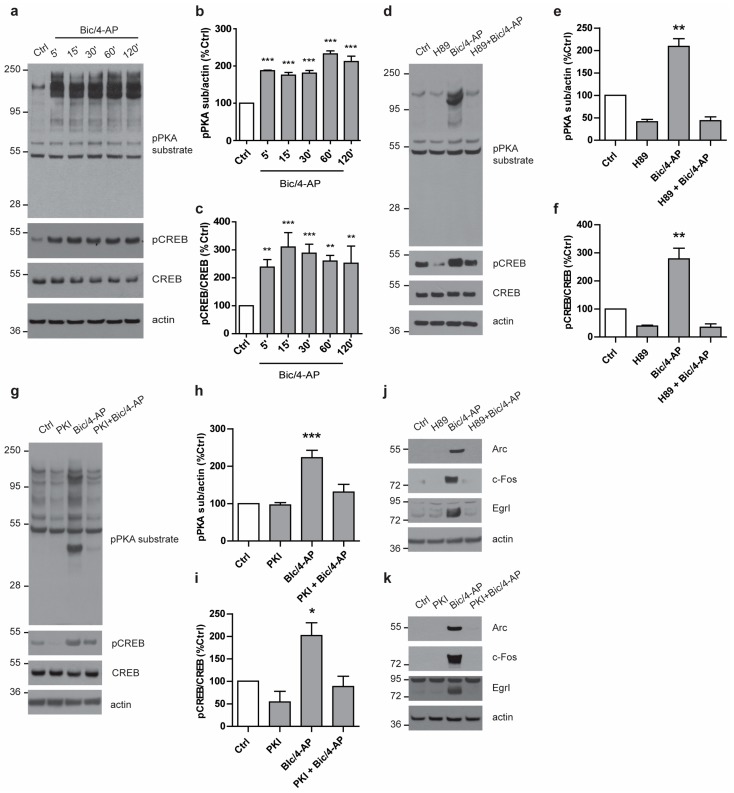Figure 3.
The cAMP-dependent protein kinase (PKA) pathway is rapidly activated following synaptic activation and is required for the expression of IEGs. (3′,5′-cyclic AMP = cAMP) (a) Primary neurons at 15 DIV treated with Bic/4-AP (50µM/2.5mM) for the indicated times were subjected to immunoblotting with anti- phospho-PKA substrate (pPKA sub), phospho-CREB (pCREB), total CREB, and actin antibodies. (cAMP response element binding = CREB) (b, c) Quantification of WB as in (a) showing the ratios pPKA sub/actin (b) and pCREB/CREB (c) expressed as a percentage of control (n = 3). (d–g) Primary neurons at 15 DIV treated with Bic/4-AP (50µM/2.5mM, 10 min) with or without 20 min pre-treatment with the PKA inhibitors H89 (20 µM, d–f) or PKA peptide inhibitor (PKI) (50 µM, g–i) were subjected to immunoblotting with anti- pPKA sub, pCREB, total CREB, and actin antibodies (d,i). Quantification of WB as in (d) and (g) showing the ratios pPKA sub/actin (e,h) and pCREB/CREB (f,i) expressed as a percentage of control (n = 4). (j,k) Primary neurons at 15 DIV treated with Bic/4-AP (50µM/2.5mM, 2 h) with or without 20 min pre-treatment with the PKA inhibitors H89 (20 µM, j) or PKI (50 µM, k) were subjected to immunoblotting with anti-Arc, cFos, EgrI, and actin antibodies. Results are representative of at least four experiments. Results show mean ± SD. One-way ANOVA followed by Bonferroni’s post-hoc test were used for evaluation of statistical significance. * p < 0.05, ** p < 0.01, *** p < 0.001.

